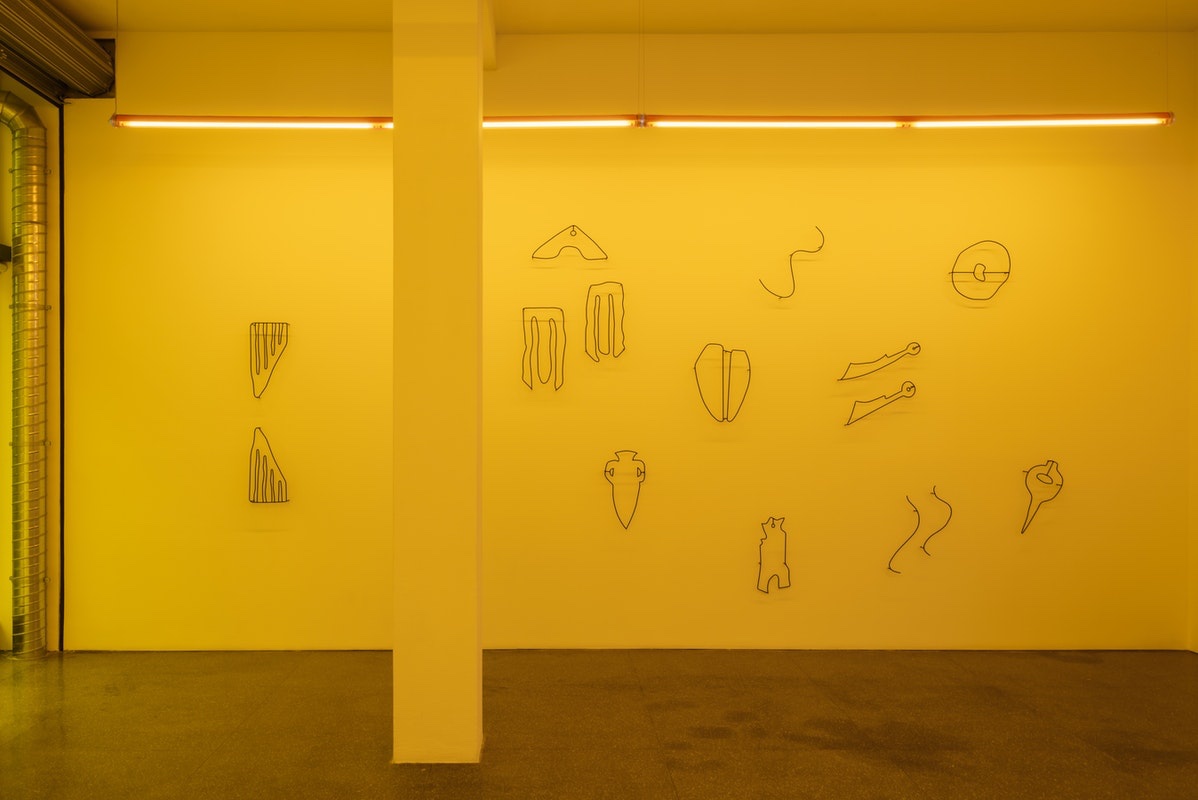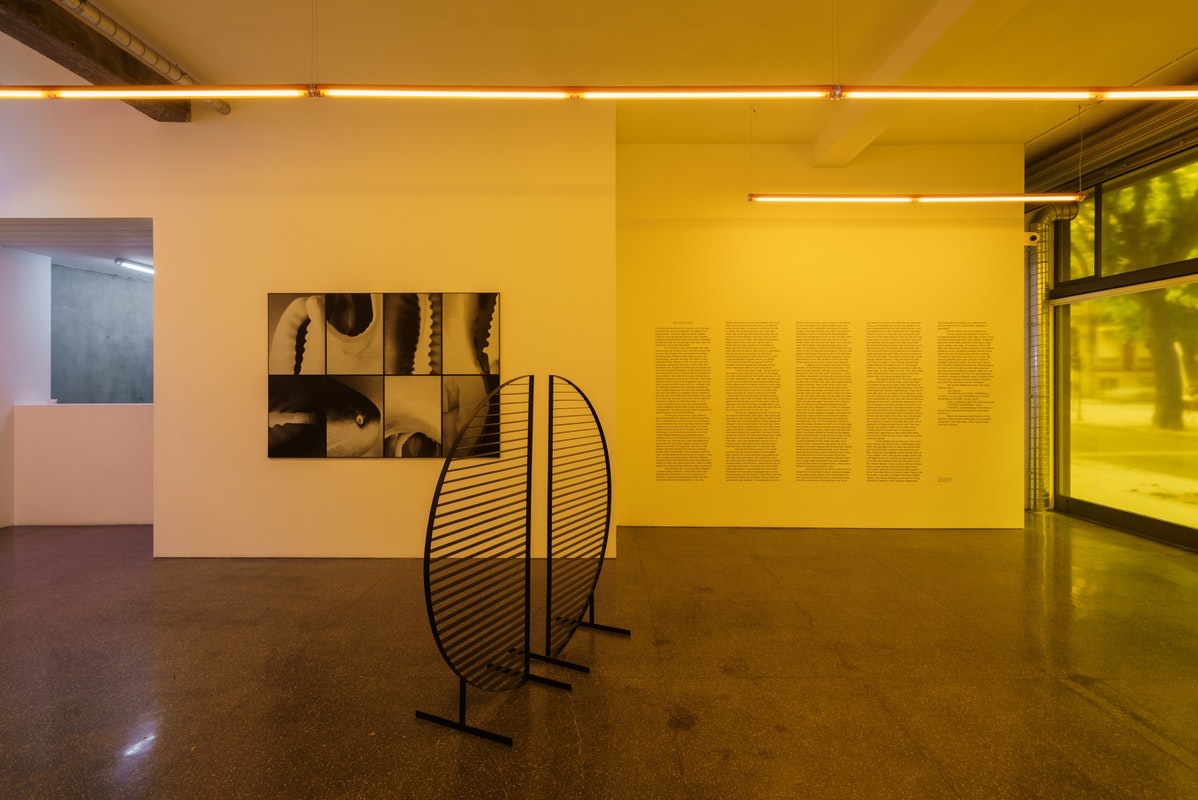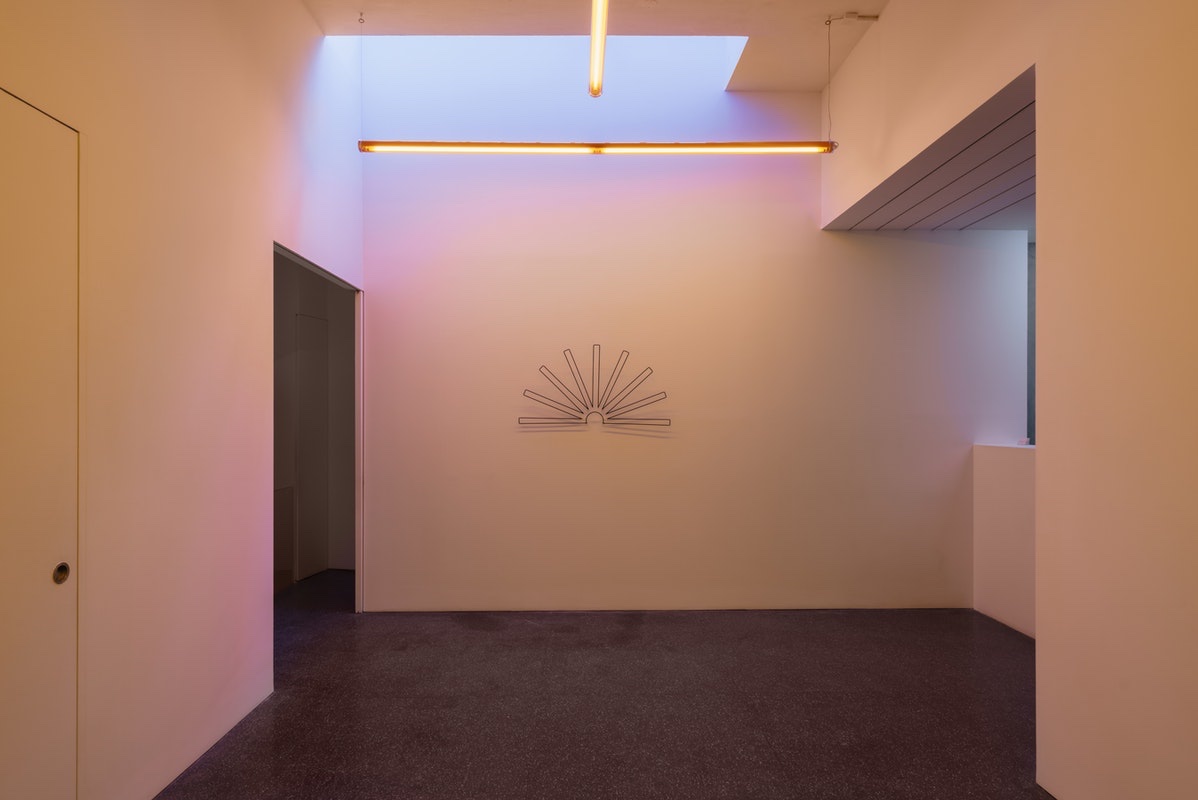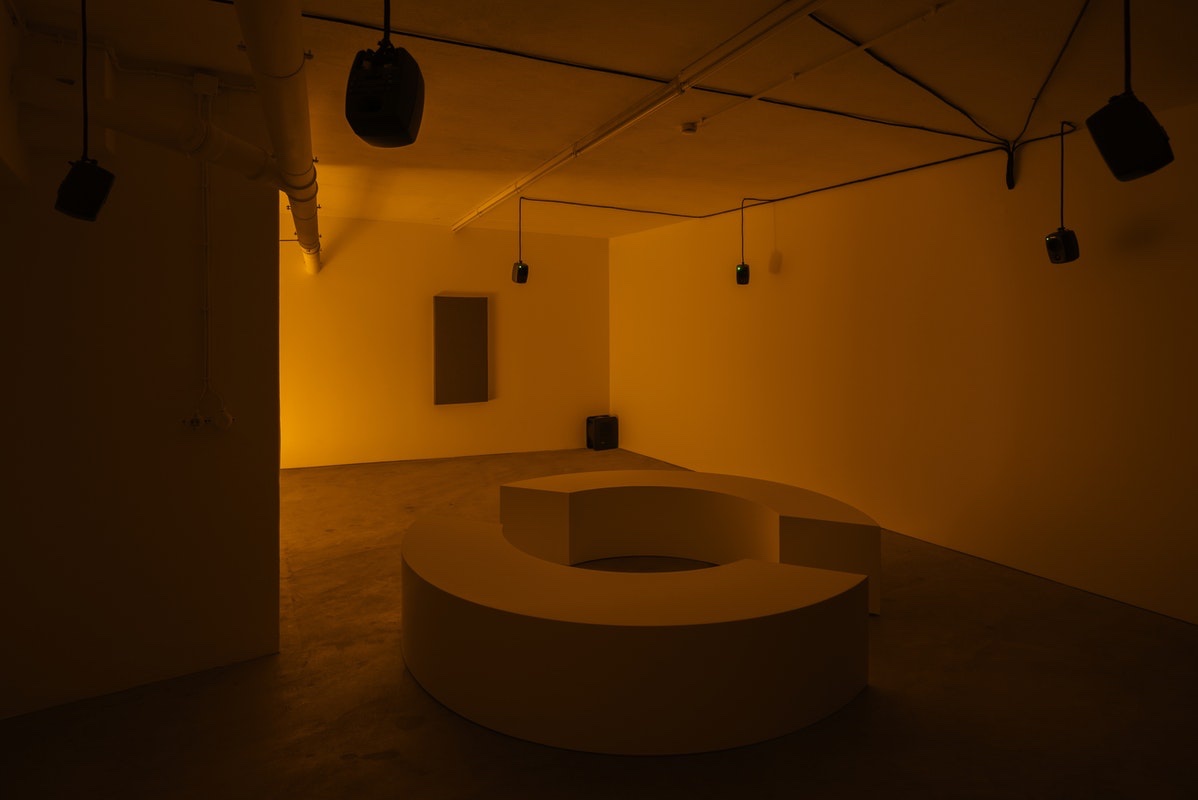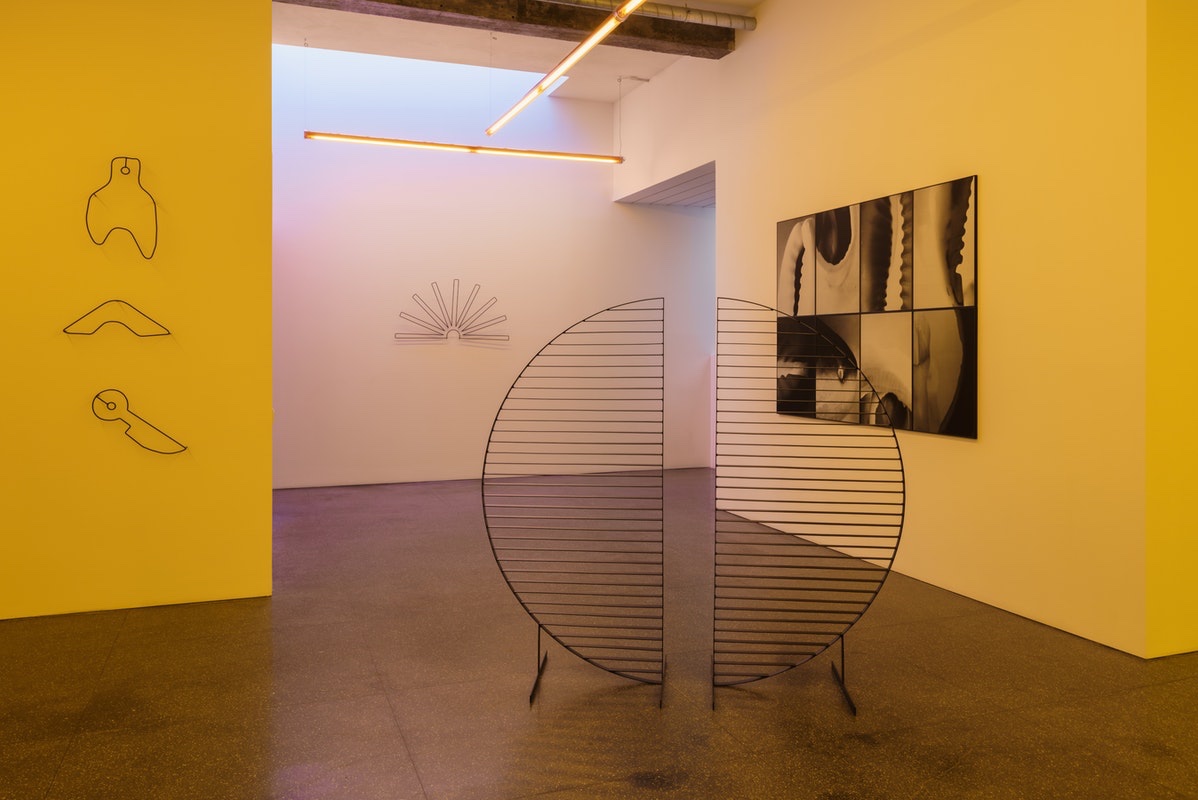
Overlay
To describe the act of covering an object with a layer of something, we use the verb to “overlay”. The same word can be used as a noun to define that layer of something covering something else. And, in the computer world, the same concept refers to the process whereby a block of code or other data is transferred to the internal memory, replacing the contents that had originally been recorded.
Diana Policarpo presents her first solo exhibition at the Galeria Lehmann+Silva, in Porto, with the title “Overlay”, and, as is customary in her work, she offers us an interesting and challenging exploration of a new territory, which is organised, in both space and time, precisely in the form of an “overlay”, in layers. On entering the gallery, we are invited to step inside a certain universe: a world where visual and sound material intersect, where a group of language systems combine with one another, where different geographical and chronological dimensions interconnect, and where we might say that the perceptive conditions defined by the artist constrain but, at the same time, stimulate each and every process involved in the production of meaning.
Inaugurating the presence of the written language in the production of her work, she proposes the reading of a short Sci-Fi story (created in collaboration with Lorena Muñoz-Alonso), with the title “The Living Currency” (quoting Pierre Klossowski's essay from 1970), which introduces into this new context a series of questions that already form a major part of Diana Policarpo’s research: the recovery of an idea of welcoming and hospitality, communication and the different ways of codifying communication processes, the climate emergency, genetic mutations and the presence of a virus as a threat to the preservation of the species and of life itself, energy exchanges and the manifestations of the presence and transformation of energy, the recovery of pre-existing technical modes and the creation of new support technologies, and, always, the underlying socio-economic factors that are implied in all of these processes.
The appropriation of pre-existing forms is shown to us through a series of silkscreens and a group of metal sculptures, almost drawings, simplifications of the original forms referring to a set of artefacts used in potlatch ceremonies or as currency by indigenous communities from the North American territories (ceremonies for the distribution of property and gifts to affirm or reaffirm one’s social status, and which Marcel Mauss classified as ‘total services of an agonistic type’). These metal sculptures occupy the space as if proposing a kind of new alphabet of forms, reminding us of the meaning of the gift or the exchange and its implications in the social fabric, the consecutive processes of an appreciation and a depreciation in value to which these goods are subject and their distortion during the historical processes of colonisation and decolonisation. The idea of value and capital, and the questioning of these notions by various authors, has always interested the artist, a situation that is not unrelated to the recovery of the proposal made by Bataille (in his essay “The Accursed Share, Vol. I”), later a foundational inspiration for Michel Serres (in “The Parasite”), which presents the Sun as the ultimate capital, as the ultimate value, as the final good.
The changes in light that she introduces into the space, where the various elements seek to establish a relationship in the form ofa dialogue, simultaneously promote a perceptive alteration in the visual, but also in the sensory, field, conferring upon the space a false vibration and a false temperature, artificial but conducive to the evocation of the solar element to which we referred earlier. The sound coming from the stair well leads the spectator to the room on the floor below. There we find “The Ultimate Capital is the Sun”, a sound composition produced by the artist from samples of sounds taken from online sound archives (NASA, Thomas Aschcraft) that house sonifications (sound versions generated from computer data) of solar matter gathered by scientists.
The modifications and transformations of energy, the changes in the state of the substances, the alchemical processes, the formal alterations of the values, the changes in the value of the goods and the way in which these changes in value alter our experience and perception, conditioning the relationships of power, the way in which energy moves, is generated and transformed into its different physical and technological states, these are all questions that are implied in Diana Policarpo’s critical and creative thinking. The various layers that cover the objects displayed at the exhibition (and the way in which these layers themselves are turned into the subject-matter of the exhibition) result from her research and from an engaged critical position that considers artistic work as an exploratory platform in the process of knowledge production.
From the text In Layers
Ana Anacleto
(Photo: Dinis Santos)
Related:
Diana Policarpo: Solar Watch - Contemporânea Magazine
Overlay by Diana Policarpo at the Lehmann + Silva - Umbigo Magazine
Diana Policarpo: Overlay - Time Out


